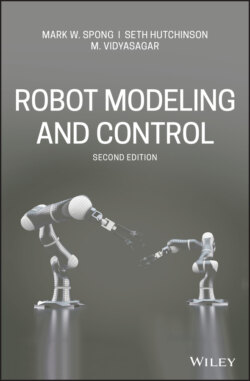Читать книгу Robot Modeling and Control - Mark W. Spong - Страница 21
Application Area
ОглавлениеRobot manipulators are often classified by application area into assembly and nonassembly robots. Assembly robots tend to be small and electrically driven with either revolute or SCARA geometries (described below). Typical nonassembly application areas are in welding, spray painting, material handling, and machine loading and unloading.
One of the primary differences between assembly and nonassembly applications is the increased level of precision required in assembly due to significant interaction with objects in the workspace. For example, an assembly task may require part insertion (the so-called peg-in-hole problem) or gear meshing. A slight mismatch between the parts can result in wedging and jamming, which can cause large interaction forces and failure of the task. As a result, assembly tasks are difficult to accomplish without special fixtures and jigs, or without controlling the interaction forces.
